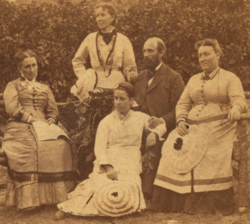This article needs additional citations for verification .(June 2014) |
| Mormonism and polygamy |
|---|
 |
The following communities were founded by the Church of Jesus Christ of Latter-day Saints (LDS Church) in Alberta:
Contents
- 1887 — Cardston [1]
- 1888 — Aetna [1]
- 1890 — Mountain View [1]
- 1891 — Beazer
- 1893 — Leavitt
- 1897 — Kimball
- 1898 — Caldwell, Magrath, [1] Stirling, [1] [2] Taylorville
- 1901 — Orton, Raymond [1]
- 1902 — Frankburg, Taber
- 1908 — Glenwood [1]
- 1910 — Hillspring [1]
The following communities were founded by LDS Church members or missionaries: